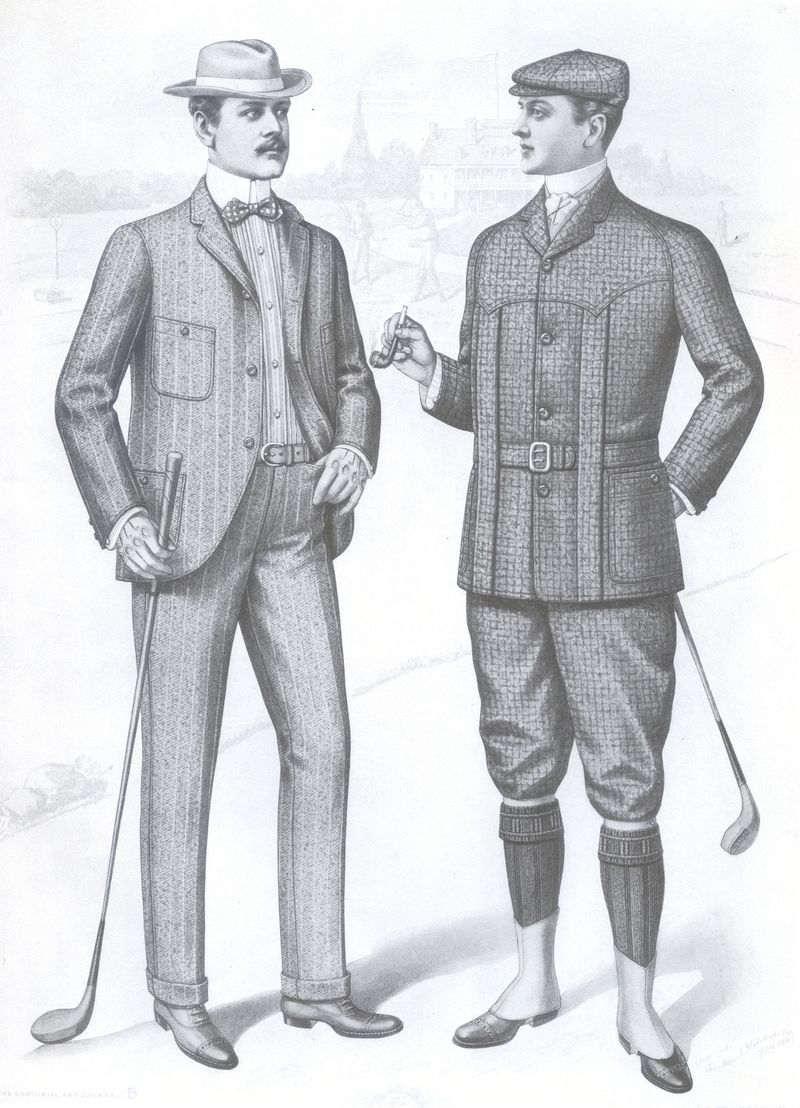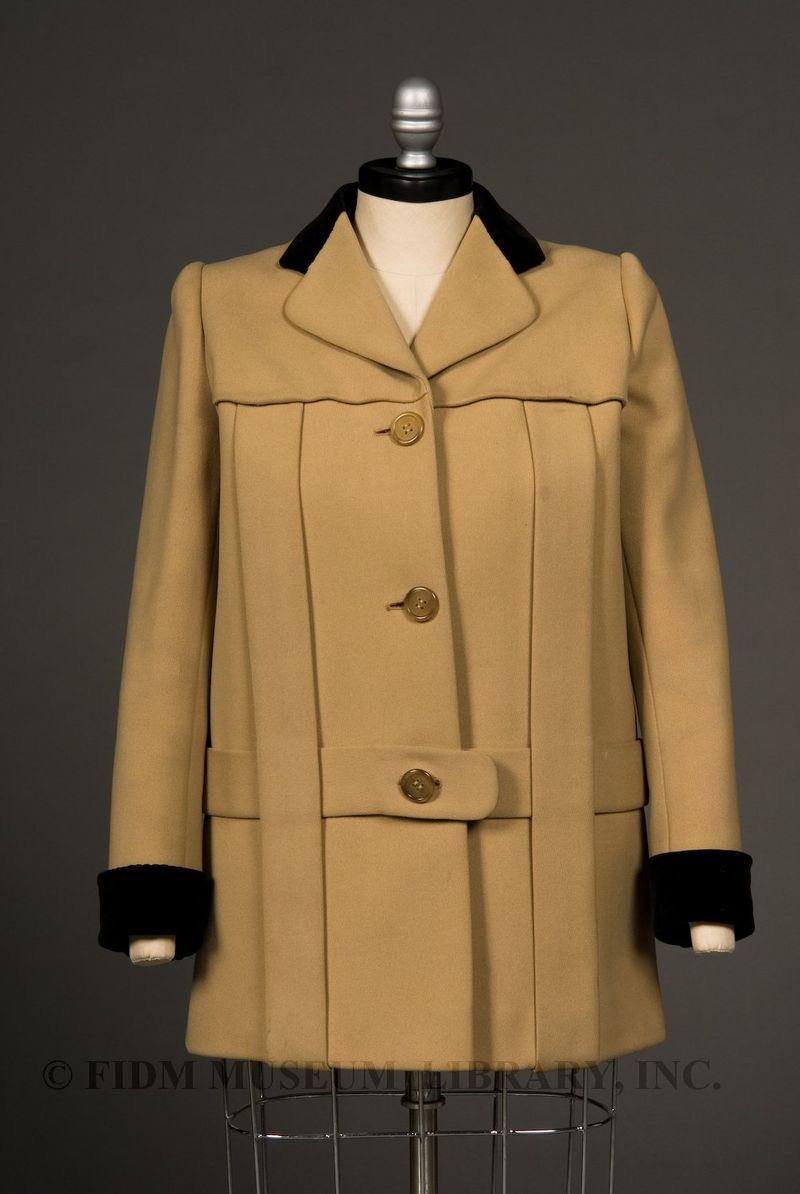First appearing in the 1860s, the Norfolk jacket is a durable, loose fitting jacket designed to provide ease of movement to hunters and sportsmen. Deriving its name from the Duke of Norfolk, the jacket was reputedly created specifically for the Duke at his request. Other origin stories suggest that the Norfolk jacket was created for the Prince of Wales, but somehow became linked with the Duke of Norfolk. Regardless of its origins, the characteristics of the Norfolk jacket made it ideal for outdoor and sporting pursuits, specifically hunting. Constructed from rough woolen fabrics and buttoning to the collar, the jacket was extremely warm and durable. With a center back and two front pleats allowing for easy arm movements and large patch pockets providing extra storage, it was widely adopted as sportswear or casual day wear by gentlemen of leisure when vacationing in the country.
Paired with a cap, short knickerbockers, rough woolen stockings and sturdy short boots, the Norfolk jacket was suitable only for informal rural settings. Unlike an urban suit, Norfolk jackets weren't always paired with matching trousers. Though fashion plates indicate the existence of matched Norfolk suits, the jacket was also worn with knickerbockers cut from a different fabric. Color also marked the Norfolk jacket as a casual garment. Unlike urban suits, which were almost uniformly black during the late 19th century, Norfolk jackets were usually made from rustic woolen fabrics in earth tones of green or brown.
Because of their functionality, Norfolk jackets were adopted by sportsmen of all varieties. Always, however, they were associated with the well-to-do, who could afford specialized garb for leisure activities. This fashion plate from May 1901 features a golfer (right) clad in a Norfolk jacket and matching knickerbockers. Dating from roughly 40 years after the origination of the Norfolk jacket, this plate confirms the longevity of the style. The jacket pictured here features all the classic characteristics of the Norfolk jacket, including patch pockets, front box pleats and a self-belt. Notice his cravat pin, a pair of crossed golf clubs.
 May 1901
May 1901
The Sartorial Art Journal
Like many garments intended specifically for adult men, the Norfolk jacket was inevitably worn by other segments of the population. Young boys often wore Norfolk suits of wool or sometimes linen. When worn by a boy, the Norfolk suit could be worn in a more formal setting. In some cases, schools adopted a version of the Norfolk suit as uniform. Women also wore more tailored versions of the Norfolk jacket as warm outer wear or when engaging in sports like bicycling. In 1902, an article titled "Outing Gowns" in Harper's Bazaar praised a tailored Norfolk jacket, "shaped at the side seams and also under the pleats in front, so that it gives a long line to the figure that is most desirable."1
By the 1920s, the Norfolk jacket fell largely out of favor, replaced by slimmer, more streamlined jackets. Though never at the absolute cutting edge of fashion, the Norfolk jacket still makes an occasional appearance, always evoking thoughts of the outdoors. In this Traina-Norell Norfolk jacket, though created long after the introduction of the style in the 1860s, the details are remarkably similar to the late 19th century version. It is also similar in spirit, as the velvet cuffs and collar suggest an elegance associated with wealth and aristocracy.
 Norfolk jacket
Norfolk jacket
Traina-Norell
c. 1947
Gift of Anonymous Donor
91.40.1
1 "Outing Gowns" Harper's Bazaar June 1902: 36.


I have a nearly identical Traina-Norell jacket in gray at my website. Thanks for featuring yours!
It is nearly identical…just slightly different cuffs!
Thank you for this article – the Norfolk jacket has been intriguing me for some time! I first noticed it on Watson in the Granada television series… 🙂